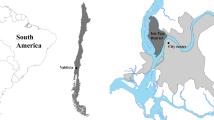Abstract
There is a strong difference of opinion concerning whether the effects of urban centers are generally beneficial or deleterious to outlying communities. Based on a sample of seventy-three barrios in Cavite Province, this paper examines several basic features of community organization to determine what effects Manila's dominance exerts. The Manila-Cavite metropolitan region is further complicated by a pronounced highland—lowland division. Land tenure, occupational structure, political activity, indebtedness, and measures of community well-being give evidence of both positive and negative effects. However, Manila's dominance does not correspond to uniform gradient patterns. Due to sharp ecological differences, the impact of the city varies between highland and lowland barrios. The fairest conclusion able to be drawn from the evidence is that contact with the city is indispensible and in many ways beneficial, but these benefits are often counterbalanced by economic and social costs for certain communities.
Similar content being viewed by others
Bibliography
Alonso, William: 1968, ‘Urban and regional imbalances in economic development’, Economic Development and Culture Change 17 pp. 1–14.
Carroll, John J.: 1970, Philippine Institutions Solidaridad Publishing House, Manila.
Castillo, Gelia, et al.: 1967, ‘A scale to measure family level of living in four barrios of Los Baños’, Philippine Sociological Review 15, pp. 67–87.
Cressey, Paul F.: 1960, ‘Urbanization in the Philippines’, Sociology and Social Research 44, pp. 402–409.
Cuyugan, R. Santos, and M. FloresBonifacio: 1973, Rural Philippine Communities: A Case Study of the Impact of Industrialization, Discussion Paper No 69, Center for Southeast Asian Studies, Kyoto University, Japan.
Hawley, Amos Henry: 1950, Human Ecology: A Theory of Community Structure (Ronald Press Co., New York).
Hoselitz, Bert F.: 1957, Sociological Aspects of Economic Growth (Free Press of Glencoe, New York).
Kaplan, Paul F.: 1974, ‘The impact of planned change and the testing of a new framework for community development’, The Journal of Developing Areas 8, pp. 363–374.
Lauby, Jennifer: 1977, ‘Indicators of social mobility’, in Mahar Mangahas (ed.): Measuring Philippine Development (The Development Academy of the Philippines), pp. 405–477.
Lipton, Michael: 1977, Why Poor People Stay Poor (Harvard University Press, Cambridge, Mass.).
McLennan, Marshall S.: 1969, ‘Land and tenancy in the Central Luzon Plain’, Philippine Studies 17, pp. 651–682.
Martin, Walter T.: 1957, ‘Ecological change in satellite rural areas’, American Sociological Review 22, pp. 173–183.
Mehta, Surinder K.: 1964, ‘Some demographic and economic correlates of primate cities: a case for revolution’, Demography 1, pp. 136–147.
Pernia, Ernest del Mar: 1977, Urbanization, Population Growth and Economic Development (Greenwood Press, Westport, Connecticut).
Schultz, Theodore: 1950, ‘Reflections on poverty within agriculture’, Journal of Political Economy 58, pp. 1–15.
Takahashi, Akira: 1969, Land and Peasants in Central Luzon (The Institute of Developing Economies, Tokyo).
Zamora, Mario D.: 1967, ‘Political history, autonomy, and change: the case of the barrio charter’, Asian Studies 5, pp. 79–100.
Author information
Authors and Affiliations
Additional information
This paper has benefited substantially from the comments of Frank W. Young.
Rights and permissions
About this article
Cite this article
Herman, C. Urban dominance, ecology and community well-being in a Philippine region. Soc Indic Res 11, 363–381 (1982). https://doi.org/10.1007/BF00323187
Received:
Issue Date:
DOI: https://doi.org/10.1007/BF00323187




